| Top Ten NYC Architecture | top ten New York Museums | |||||||||||||
| For a more complete list, see Museum,Gallery,Library etc. | ||||||||||||||
| 1 |
American Museum of Natural History |
|||||||||||||
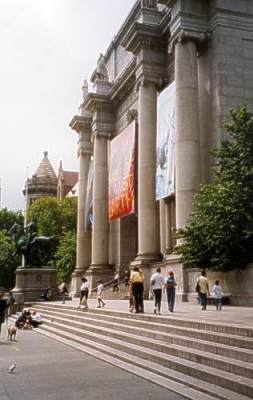 |
The Natural History Museum is one of the most famous tourist attractions in New York City. The architecture alone makes the museum stand out; it’s a huge, sprawling stone building that reflects an eclectic mix of design styles. The Central Park West entrance has towering white columns and a bronze statue of President Theodore Roosevelt on horseback, other parts of the building look Medieval, with towers like on a storybook castle, and the Rose Center is as modern as a building can get, a glass box with the new Hayden sphere floating in the center. The most important thing to know when planning a visit is that the museum is huge so plan to do a lot of walking and stair climbing. There are four floors of gallery space and the building is spread over an area of several city blocks. Inside there are 42 permanent exhibits and several temporary ones covering everything in creation from the beginning of time to the present, every discipline of human science: biology, ecology, zoology, geology, astronomy, and anthropology. The museum presents its collection of millions of artifacts with detailed information about the cultural, scientific, or historical importance of the pieces. It’s quite possible to spend hours just in the Halls for Asian, African & South American Peoples. |
|||||||||||||
| 2 |
Museum of Modern Art |
|||||||||||||
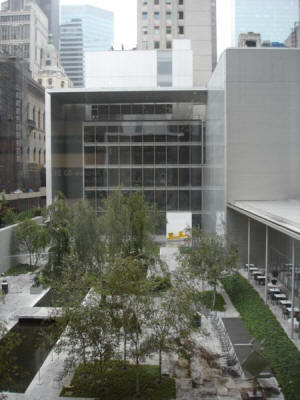 |
The Museum of Modern Art (MoMA) is a preeminent art museum located in Midtown Manhattan in New York City, USA, on 53rd Street, between Fifth and Sixth Avenues. It has been singularly important in developing and collecting modernist art, and is often identified as the most influential museum of modern art in the world.[1] The museum's collection offers an unparalleled overview of modern and contemporary art, [2] including works of architecture and design, drawings, painting, sculpture, photography, prints, illustrated books, film, and electronic media. MoMA's library and archives hold over 300,000 books, artist books, and periodicals, as well as individual files on more than 70,000 artists. The archives contain primary source material related to the history of modern and contemporary art. |
|||||||||||||
| 3 | Metropolitan Museum of Art | |||||||||||||
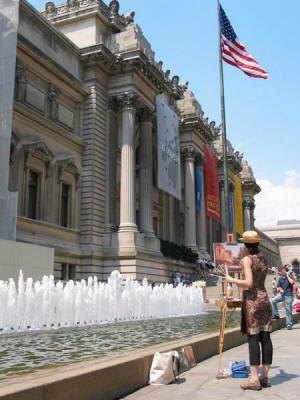 |
The Metropolitan Museum of Art, often referred to simply as "the Met", is one of the world's largest and most important art museums. The main building is located on the eastern edge of Central Park in New York City, New York, United States, along what is known as Museum Mile. It was designated a National Historic Landmark in 1986. The Met has a much smaller second location at "The Cloisters," featuring medieval art. |
|||||||||||||
| 4 | Whitney Museum of American Art | |||||||||||||
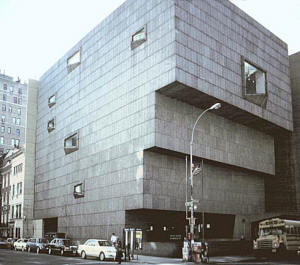 |
The Whitney Museum of American Art owes its striking granite presence at the southeast corner of Madison Avenue and 75th Street to the Hungarian-born, Bauhaus-trained architect Marcel Breuer (1902-1981). To design a third home for the Museum—which had gradually migrated northward from its original location on West 8th Street to West 54th Street—Breuer worked with Hamilton Smith, creating a strong modernist statement in a neighborhood of traditional limestone, brownstone, and brick row houses and postwar apartment buildings. Considered somber, heavy, and even brutal at the time of its completion in 1966 ("an inverted Babylonian ziggurat," according to one critic), Breuer's building is now recognized as daring, strong, and innovative. It has won landmark status, and has come to be identified with the Whitney's own uninhibited approach to twentieth-century art. |
|||||||||||||
| 5 | Solomon R. Guggenheim Museum | |||||||||||||
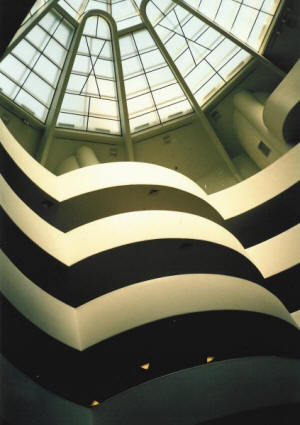 |
Originally called "The Museum of Non-Objective Painting," the Guggenheim was founded to showcase avant-garde art by early modernists such as Wassily Kandinsky and Piet Mondrian. It moved to its present location, at the corners of 89th Street and Fifth Avenue (overlooking Central Park), in 1959, when Frank Lloyd Wright's design for the site was completed. The distinctive building, Wright's last major work, instantly polarized architecture critics, though today it is widely revered. From the street, the building looks approximately like a white ribbon curled into a cylindrical stack, slightly wider at the top than the bottom. Its appearance is in sharp contrast to the more typically boxy Manhattan buildings that surround it, a fact relished by Wright who claimed that his museum would make the nearby Metropolitan Museum of Art "look like a Protestant barn." Internally, the viewing gallery forms a gentle spiral from the ground level up to the top of the building. Paintings are displayed along the walls of the spiral and also in viewing rooms found at stages along the way. |
|||||||||||||
| 6 | Cooper-Hewitt Design Museum | |||||||||||||
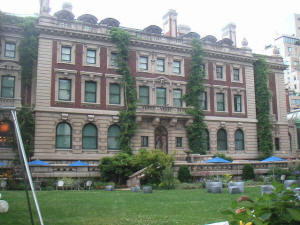 |
The Museum preserves, documents, and expands a collection of nearly 250,000 works in such fields as rare books, drawings and prints, textiles, wall coverings, furniture, ceramics, glass, metalwork, and jewelry. Areas of interest include graphic design, industrial design, and architecture. The perspective is international, and the Museum's holdings encompass both historical and contemporary design and decoration. A democratic regard for mass-produced as well as one-of-a-kind objects lends a unique character to the collections. |
|||||||||||||
| 7 | ELLIS ISLAND | |||||||||||||
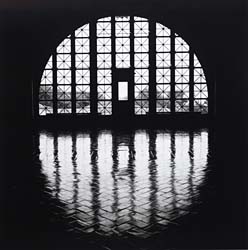 |
Ellis Island, at the mouth of the New York Harbor, was at one time the main entry facility for immigrants entering the United States from January 1, 1892 until November 12, 1954. It is wholly in the possession of the Federal government as a part of Statue of Liberty National Monument and is under the jurisdiction of the US National Park Service. It is situated in New York City and Jersey City, New Jersey. Ellis Island was the subject of a border dispute between New York State and New Jersey. According to the United States Census Bureau, the island, which was largely artificially created through the landfill process, has an official land area of 129,619 square meters, or 32 acres, more than 83 percent of which lies in the city of Jersey City. The natural portion of the island, lying in New York City, is 21,458 square meters (5.3 acres), and is completely surrounded by the artificially created portion. For New York State tax purposes it is assessed as Manhattan Block 1, Lot 201. Since 1998, it also has a tax number assigned by the state of New Jersey. |
|||||||||||||
| 8 | The Cloisters | |||||||||||||
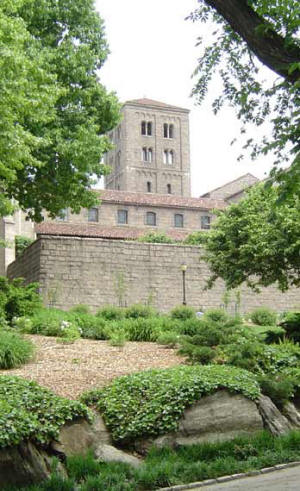 |
The Cloisters—described by Germain Bazin, former director of the Musée du Louvre in Paris, as "the crowning achievement of American museology"—is the branch of the Metropolitan Museum devoted to the art and architecture of medieval Europe. Located on four acres overlooking the Hudson River in northern Manhattan's Fort Tryon Park, the building incorporates elements from five medieval French cloisters—quadrangles enclosed by a roofed or vaulted passageway, or arcade—and from other monastic sites in southern France. Three of the cloisters reconstructed at the branch museum feature gardens planted according to horticultural information found in medieval treatises and poetry, garden documents and herbals, and medieval works of art, such as tapestries, stained-glass windows, and column capitals. Approximately five thousand works of art from medieval Europe, dating from about A.D. 800 with particular emphasis on the twelfth through fifteenth century, are exhibited in this unique and sympathetic context. The new museum building was designed by Charles Collens (1873–1956), the architect of New York City's Riverside Church, in a simplified, paraphrased medieval style, incorporating and reconstructing the cloister elements salvaged by Barnard. Joseph Breck (1885–1933), a curator of decorative arts and assistant director of the Metropolitan, and James J. Rorimer (1905–1966), who would later be named director, were primarily responsible for the interior. Balancing Collens's interpretation with strict attention to historical accuracy, Breck and Rorimer created in the galleries a clear and logical flow from the Romanesque (ca. 1000–ca. 1150) through the Gothic period (ca. 1150–1520). The Cloisters was formally dedicated on May 10, 1938. The Treasury, containing sumptuous objects created for liturgical celebrations, personal devotions, and secular uses, was renovated in 1988. The galleries in which the seven tapestries depicting "The Hunt of the Unicorn" are hung were refurbished in 1999. |
|||||||||||||
| 9 | The Jewish Museum | |||||||||||||
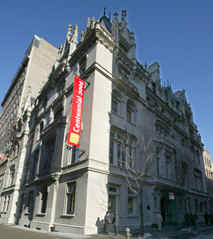 |
"Apparently, Felix and Frieda Warburg, prominent members of New York's German-Jewish aristocracy, were so impressed with the François I chateaux that C. P. H. Gilbert had designed for the Fletchers [at 2 East 79th Street] and Woolworths [formerly at 990 Fifth Avenue] farther south of Fifth Avenue, that they commissioned a similar house for themselves. For the Warburgs, Gilbert created a house that, in its basic form, is similar to the Fletchers', but is somewhat more refined. The Warburg House is more artfully massed, with a subtle balance of window and door openings and projecting and receding planes, but it is less whimsical than the earlier dwelling, lacking much of the droll detail that so enlivens the 79th Street house." |
|||||||||||||
| 10 | El Museo del Barrio | |||||||||||||
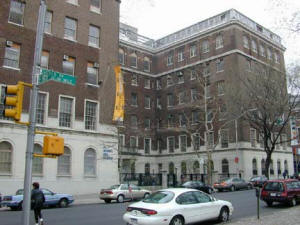 |
parents, educators, artists and community activists in East Harlem's Spanish-speaking el barrio, the neighborhood that extends from 96th Street to the Harlem River and from Fifth Avenue to the East River on Manhattan's Upper East Side. The contexts of El Museo's founding were the national civil rights movement and, in the New York City art world, the campaign that called for major art institutions to decentralize their collections and to represent a variety of non-European cultures in their collections and programs. From the outset, El Museo defined itself as an educational institution and a place of cultural pride and self-discovery for the founding Puerto Rican community. Initially El Museo operated in a public school classroom as an adjunct to the local school district; then, between 1969 and l976, El Museo moved to a series of storefronts on Third and Lexington Avenues, in the heart of el barrio. In 1977 El Museo found a permanent home in the spacious, neo-classical Heckscher Building at 1230 Fifth Avenue. |
|||||||||||||
| 11 | Museum of the City of New York | |||||||||||||
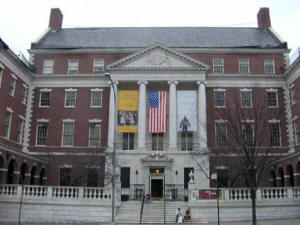 |
This Georgian-Colonial style building, designed by Joseph H. Freedlander, was built for the Museum in 1932. The Museum was incorporated as a non-profit organization in 1923; its previous home was Gracie Mansion. |
|||||||||||||